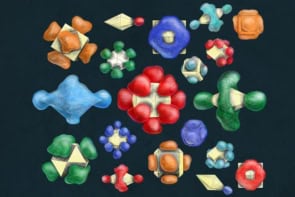Tales of trials and triumph at the Paralympic games

Imagine working hard for four years, training relentlessly, going away for months on end to practise in snow, triumphing over injuries and setbacks, and then finally making it to the Pyeongchang Winter Paralympic Games in South Korea. You head out with the rest of the sledge-hockey team onto the ice for your first game. You’re subbed on and things are going great; you’re rapidly gliding over the ice. Then, smack! A head-on collision throws you onto the ice. You can’t feel it, but you’ve broken your ankle, and you’re out of the match and the rest of the tournament. All that hard work for one minute of Paralympic competition.
However, there is a lifeline for competitors in the form of the “prosthetics pit lane” – a repairs workshop tucked away discreetly in the Paralympic village. There’s a huge amount going on inside, as I found for myself while assisting with emergency repairs and maintenance work at this year’s Winter Paralympic games. The sledge-hockey repair was what I first got to see. A plaster-cast mould was taken of the athlete’s leg to create a leg protector, so they could continue to play. Next, a soft foam layer was made for comfort while wearing the protector. With this moulded foam in place, a “Cellacast” layer was formed – exactly the same material used in hospitals for casts when you’ve broken bones. A durable hard layer is crucial in sports like sledge hockey where the collisions are brutal. Once set hard, the protector was cut into two pieces so that it could be put on. This particular repair went right down to the wire, as it was required for a game that evening. The athlete came by and saw the final touches before running to catch the bus to the hockey arena, putting the pressure on the repairs team. They finished just in time and this athlete then went on to score the only goal for Sweden in these games.
These are the kind of heart-warming stories that taking part in the Paralympics is all about. Making these moments possible is the team in the Ottobock repairs workshop, consisting of about 30 people from 11 different countries. Athletes need to be able to describe the problem, so they cover as many languages as possible. Ottobock is a German company that specializes in making and supplying prosthetic limbs; and the available equipment and materials at the Paralympic workshop is limited compared to their normal workshops. But that doesn’t hinder the team from rising to the repair challenges, be that a wheelchair puncture or making an entirely new prosthesis.
At the games, repairs are rapid, and you never know what’s coming next. A shock for me was seeing so much sewing. A zip had broken on the only ski jacket for the one athlete representing Tajikistan. Without the jacket he could not compete, so we set about fixing the zip, eventually resorting to sewing in some Velcro to do the jacket up. Perhaps the next games should have a few resident needleworkers.
The prosthesis can crudely be viewed a little like flat-pack furniture, in that there’s an Allen key that will adjust every screw on it
Peter Franzel, who heads the company’s involvement in the Paralympics, hits the nail on the head when it comes to prostheses, saying that “nobody really cares about [the prosthetics] until the Paralympics, where they become normal.” Despite this lack of widespread appreciation, there have been some very significant developments in the area. Ottobock started developing prostheses after veterans of the Second World War were struggling to lead an everyday life with their wooden prostheses. Today the company is a leading manufacturer and developer in the field of prosthetics and orthotics. One key step was making prostheses modular; a series of connected parts that attach to a custom-made socket. This socket then attaches to the patient’s stump. It can crudely be viewed a little like flat-pack furniture, in that there’s an Allen key that will adjust every screw on the prostheses, so you can put a whole series of things together. The modular advantage is most of the components can be easily swapped out if they become broken or damaged. Ahead of the games, several tonnes of spare parts were shipped out for this very purpose. This made for entertaining store-room rummaging, finding boxes of feet and hands.
Beyond fabricating prostheses, the team also fit its patients with the prosthesis, which requires balancing of forces through the joints. In the case of legs, a stump can stick out at quite an angle, so initially all the measurements and angles of the legs are taken. Every module in the prosthesis has a pyramid-based attachment so adjustments are made with pairs of screws. To aid the alignment, there’s kit involving two cameras and a balance board. The board feeds back weight distribution across each leg and hip rotation. A lot of people don’t put enough weight onto their prosthetic leg, so this is an important part in learning how to move about with a prosthesis. The cameras reveal how the weight is loaded through the joints in each leg. Small tweaks in the alignment of the prosthesis can correct this force line, so that it passes through the hip and knees at the correct points to minimize adverse impacts on the body.
It was an exciting, humbling and insightful experience seeing the repairs workshop in action. I was constantly amazed at the passion and dedication from the Ottobock team, and the wonderful sense of community around the Paralympic village.



